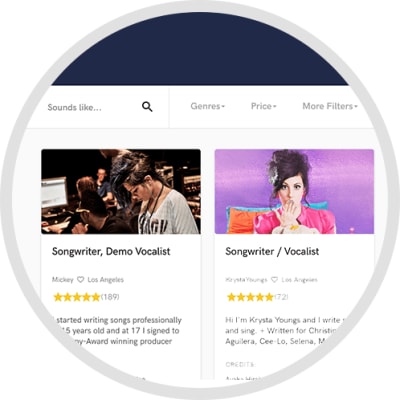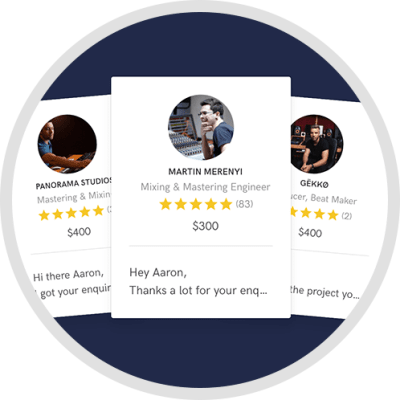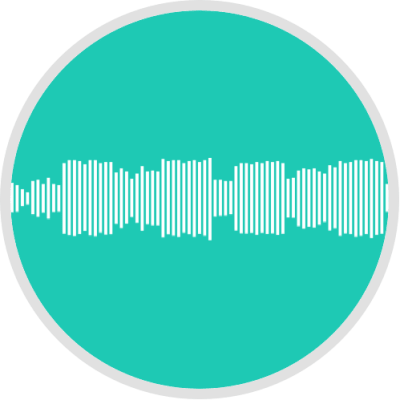
Ekoboy is a reflection of Greek DJ/producer Vangelis Kostoxenakis. Widely known for his raw, quirky signature style and established by his releases on Dirtybird, Moon Harbour, Sola, Toolroom, Circus and more.
With over two decades in the electronic music scene and releases across acclaimed underground and major labels, I’ve built my reputation as Ekoboy through consistent chart-topping tracks, DJ performances worldwide, and a catalog of 700+ published works under multiple successful aliases. My productions have gained support from international tastemakers and secured high-profile sync placements, including on CBS and NBC.
Beyond my artist career, I specialize in:
Professional Mixing & Mastering – delivering punchy, balanced, and release-ready tracks tailored for clubs, festivals, and streaming platforms.
Additional Production & Ghost Production – helping artists elevate their ideas with creative sound design, arrangement, and polish that stands out in today’s competitive market.
Analog & Modular Processing – adding warmth, depth, and unique character through high-end analog gear and modular systems.
Whether you need your track mixed to industry standards, mastered with psychoacoustic precision for maximum impact, or enhanced with fresh production ideas, I bring the experience, technical expertise, and creative edge to take your music to the next level.
Contact me through the green button above and let's get to work.
Endorse Ekoboy5 Reviews - 1 Repeat Client
 check_circleVerified
check_circleVerified3rd project and he just keeps smashing it! Truly next level, love working with him!
 check_circleVerified
check_circleVerifiedTruly amazing. This producer is a legend already. Brought my vision to life and beyond, will definitely be back! Thank you!
 check_circleVerified
check_circleVerifiedSecond project, this guy is a legend. Truly knows sound design and elevated my project to new heights, thank you! Great to work with, quick and efficient and truly a next level producer
 check_circleVerified
check_circleVerifiedTruly a master! He is already a legend, and amazing to work with. Really helped me elevate my track! Thann you!
 check_circleVerified
check_circleVerifiedI am happy that I've found Ekoboy on Soundbetter. My track went from 10 to 1000 thanks to him!
Interview with Ekoboy
Q: What's your typical work process?
A: As a music producer and sound enthusiast with a studio setup that includes a Moog Sub37, ARP Odyssey, 2x104 modular case, ASM HydraSynth, Elektron Model Cycles, class A digital conversion, and UAD plugins, my typical work process revolves around a harmonious blend of analog and digital creativity.
Q: Analog or digital and why?
A: Ultimately, the choice between analog and digital comes down to personal preference, artistic vision, and the specific needs of each project. Many modern producers like myself embrace a hybrid approach, combining the best of both worlds to leverage the strengths of analog warmth and digital precision. Some artists may prefer the intimate connection with analog gear and the unique sonic characteristics it imparts, while others may appreciate the convenience, versatility, and infinite possibilities offered by digital technology. In the end, the key is to choose the tools that align with your creative goals and allow you to best express your artistic vision.
Q: What's your 'promise' to your clients?
A: Im a click away.
Q: What do you like most about your job?
A: What I like most about my job is the opportunity to immerse myself in the world of music, express my creativity, and connect with others through the power of sound. My dedication to the craft, collaborative spirit, and love for music ensure that every project I undertake is a rewarding and enriching experience, both for myself and those who experience my music.
Q: What advice do you have for a customer looking to hire a provider like you?
A: Review Portfolio and Previous Work: Take the time to review the provider's portfolio, including samples of their previous work and projects. This will give you an insight into their style, versatility, and the quality of their productions. Look for projects that align with your own vision to ensure a good fit. Check Client Testimonials and Reviews: Seek out testimonials or reviews from previous clients to gauge their satisfaction with the provider's work. Positive feedback and client satisfaction are indicators of a reliable and skilled professional. Communicate Clearly: Before hiring the provider, communicate your expectations, goals, and preferences clearly. Effective communication from the outset will lead to a smoother working relationship and ensure that both parties are on the same page. Discuss Project Scope and Timeline: Outline the scope of your project and discuss a realistic timeline for completion. A clear understanding of the project's scope and deadlines will help manage expectations and avoid any potential misunderstandings. Collaborate and Be Open to Suggestions: A successful working relationship involves collaboration. Be open to the provider's creative ideas and suggestions while also expressing your own vision. The best results often come from a harmonious exchange of ideas. Budget Considerations: Discuss pricing and payment terms with the provider early in the process. Make sure both parties are comfortable with the agreed-upon budget and payment schedule. Professionalism and Reliability: Look for a provider who demonstrates professionalism, reliability, and a commitment to delivering high-quality work on time. Punctuality and dedication to the project are essential qualities to ensure a smooth collaboration. Ask Questions: Don't hesitate to ask any questions or seek clarification on any aspect of the project. A good provider will be happy to address your concerns and provide the necessary information. Trust Your Instincts: Ultimately, trust your instincts when choosing a provider. If you feel comfortable with their communication, portfolio, and approach to the project, it's likely to be a good fit.
Q: If you were on a desert island and could take just 5 pieces of gear, what would they be?
A: A modular case. Sky is the limit
Q: What was your career path? How long have you been doing this?
A: All my life.
Q: How would you describe your style?
A: I have released music on various respected record labels and gained recognition for my unique sound and infectious rhythms. My tracks often feature groovy basslines, catchy melodies, and expertly crafted percussion, making them popular among DJs and dance music enthusiasts alike.
Q: Can you share one music production tip?
A: When you think you mastered it, think again.
Q: What type of music do you usually work on?
A: Tech House, Minimal Deep Tech, Techno, House.
Q: What's your strongest skill?
A: My strongest skill is to describe and provide detailed information about various topics, including music production, sound engineering, studio setups, synthesizers, and the creative process involved in music composition. Moreover, I am capable of sound designing and arranging rough sketches to final products, ready for release.
Q: What do you bring to a song?
A: A wealth of creativity, technical expertise, and a deep appreciation for the art of sound to every song I work on. My studio setup and passion for musical expression ensure that each composition I create is a unique and captivating experience, leaving a lasting impression on my audience
Q: Tell us about your studio setup.
A: Welcome to my studio, where creativity knows no bounds and sonic exploration is a daily adventure. My collection of synthesizers and equipment forms the foundation of my musical universe, allowing me to bring my artistic visions to life in ways I've always dreamed of. The centerpiece of my setup is the iconic Moog Sub37, an analog beast that never fails to mesmerize me with its warm and organic tones. Its expressive capabilities and intuitive interface make it an extension of my musical soul, enabling me to evoke emotions through every note and modulation. Right alongside the Sub37 sits the legendary ARP Odyssey, a timeless synthesizer that adds a touch of vintage charm to my productions. Its distinctive filter and oscillator character infuse my music with a sense of nostalgia and uniqueness. My 2x104 modular case is a playground of endless possibilities, where I lose myself in a world of patch cables and sonic experimentation. I love the hands-on approach and the serendipitous moments that arise while crafting sounds from scratch, tailored precisely to my imagination. The ASM HydraSynth brings the digital realm into my setup, introducing me to a universe of wavetable synthesis and futuristic sound design. Its expressive keyboard and wealth of modulation options inspire me to create evolving textures and otherworldly timbres. When it comes to rhythm and beats, the Elektron Model Cycles is my go-to companion. Its groovebox-style sequencer and versatile sound engine let me craft infectious rhythms that drive my compositions forward. Ensuring pristine audio quality throughout my studio is the class A digital conversion, which captures the nuances of my analog gear with utmost fidelity, giving my recordings an unparalleled clarity. Adding the finishing touches to my mixes are the UAD plugins. These meticulously crafted digital emulations of classic hardware processors elevate my sound to a professional level, infusing it with the richness and character of vintage gear. In this sonic haven, I embark on endless musical journeys, exploring new genres, and pushing the boundaries of my creativity. My studio setup is more than just a collection of equipment; it's an extension of my musical identity, enabling me to connect deeply with my audience and share my passion for sound with the world.
Q: Describe the most common type of work you do for your clients.
A: Pre-production Consultation: Engaging with the client to understand their musical objectives, preferences, and desired outcomes. This involves discussing the style, genre, instrumentation, and overall creative direction of the project. Mixing: Balancing and blending the individual tracks to craft a cohesive and harmonious sound. Mastering: Preparing the final mix for distribution across various platforms. This step involves optimizing the audio for different playback systems, ensuring consistent volume levels, and applying final touches to achieve a professional and polished sound. Instrumentation and Arrangement: If needed, I collaborate with the artist or producer to enhance the arrangement of the song, suggesting additional instrumentation or structural changes to improve the overall impact. Sound Design: Creating or sourcing unique and creative sounds to add texture and depth to the music. This can involve designing custom synth patches, creating sound effects, or manipulating existing audio elements. Feedback and Collaboration: Throughout the production process, I communicate and collaborate with the client, providing updates, seeking feedback, and making adjustments based on the client's input. Quality Assurance: Ensuring that the final product meets professional industry standards and is ready for distribution or release. This involves careful quality control and attention to detail.

I was the producer in this production
- Ghost ProducerContact for pricing
- Mastering EngineerContact for pricing
- Mixing EngineerAverage price - $150 per song
- Sound DesignContact for pricing
- Keyboards - SynthContact for pricing
Typically 3 revisions on mixes and masters. +1 revisions charge with 20 euros for ITB mix/masters and 50 for prints.
For ghost production, changes within reason.
- Modular synth
- Moog Sub37
- Hydrasynth
- Electron Model Cycles
- Boutique 2x104 Eurorack System
Mix&Mastering on discount



